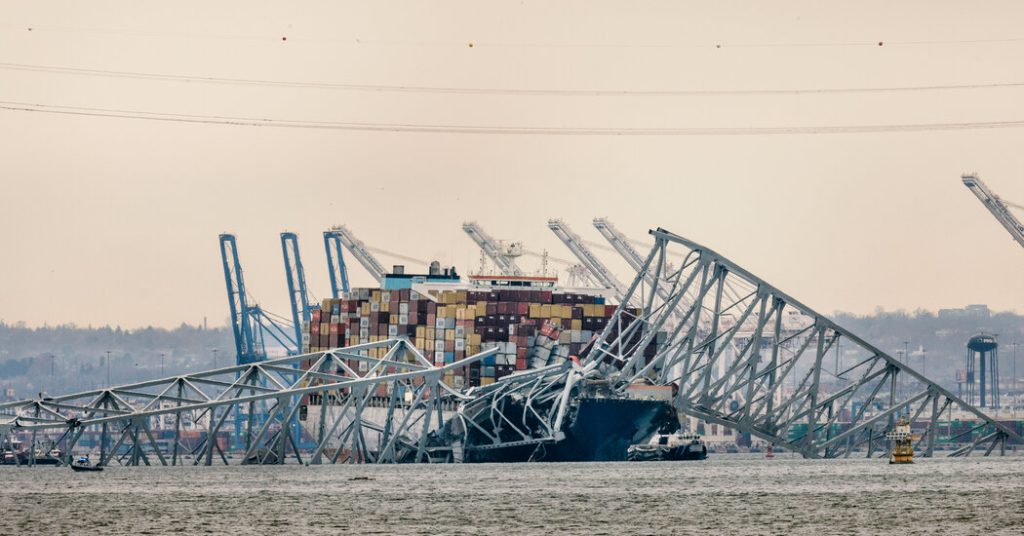Officials have shifted their focus from search and rescue efforts to cleanup and rebuilding after the collapse of the Francis Scott Key Bridge in Baltimore. Debris blocking a vital shipping lane is expected to be cleared in weeks, but reconstructing the bridge will be a lengthy process according to federal and state officials. The collapse, caused by a ship striking a critical component, has had a significant impact on Baltimore and the shipping industry. Six construction workers were initially missing, with two bodies recovered and the remaining presumed dead.
Reopening the Port of Baltimore, a crucial hub for automobiles on the East Coast and a major shipping port, is a top priority for state and federal leaders. With vessel traffic shut down and around a dozen ships stranded in the port, employing 8,000 people, the economic stakes are high. The U.S. Army Corps of Engineers will cover the costs of clearing the shipping channel, while the Biden administration has allocated $60 million in emergency federal highway funds for rebuilding the bridge. The urgency to clear the shipping channel is paramount due to the blockage hindering Port operations.
Cleanup efforts are already in progress, with a plan outlined by Rear Adm. Shannon Gilreath of the U.S. Coast Guard involving clearing debris, removing the ship, and cleaning up the remaining debris in the waterway. Governor Moore mentioned that the Army Corps will utilize a large crane to assist in lifting the collapsed bridge out of the water, with the potential use of sonar technology. Divers will play a crucial role in cutting the metal and concrete structures into manageable pieces for removal in challenging working conditions.
While the cleanup operation is expected to unfold over the coming weeks, the process of reconstructing the bridge could span several years. The structural integrity of the remaining portions will need to be evaluated before decisions are made on potential enhancements, such as building a larger roadway or raising the bridge’s height. These modifications, although requiring more time and resources, would ensure the bridge’s longevity according to civil engineering experts. The complexity of the salvage operation and the delicacy of the reconstruction phase underscore the challenges ahead for Baltimore.
The Baltimore district of the Army Corps will play a key role in managing the cleanup and salvage operations, with the use of cranes to remove debris from the river floor and assist in freeing the container ship. The divers involved in the process will face challenging conditions, including swift currents and low visibility. Initial plans may involve opening a narrower shipping lane to allow stranded ships to move out of the port while work continues on clearing the channel. The rebuilding effort will require meticulous planning and execution to ensure the structural safety and efficiency of the new bridge.
Overall, the aftermath of the Francis Scott Key Bridge collapse in Baltimore has triggered a multifaceted response involving cleanup, salvage, and reconstruction efforts. The economic impact on the region, particularly on the Port of Baltimore, underscores the urgency of clearing the shipping channel and rebuilding the bridge as quickly as possible. While the cleanup operation progresses, the focus will gradually shift towards the long-term task of reconstructing the bridge, with a strong emphasis on durability and safety. The collaborative efforts of federal, state, and local agencies, as well as engineering experts, will be crucial in navigating the complex challenges ahead in restoring the vital infrastructure.


